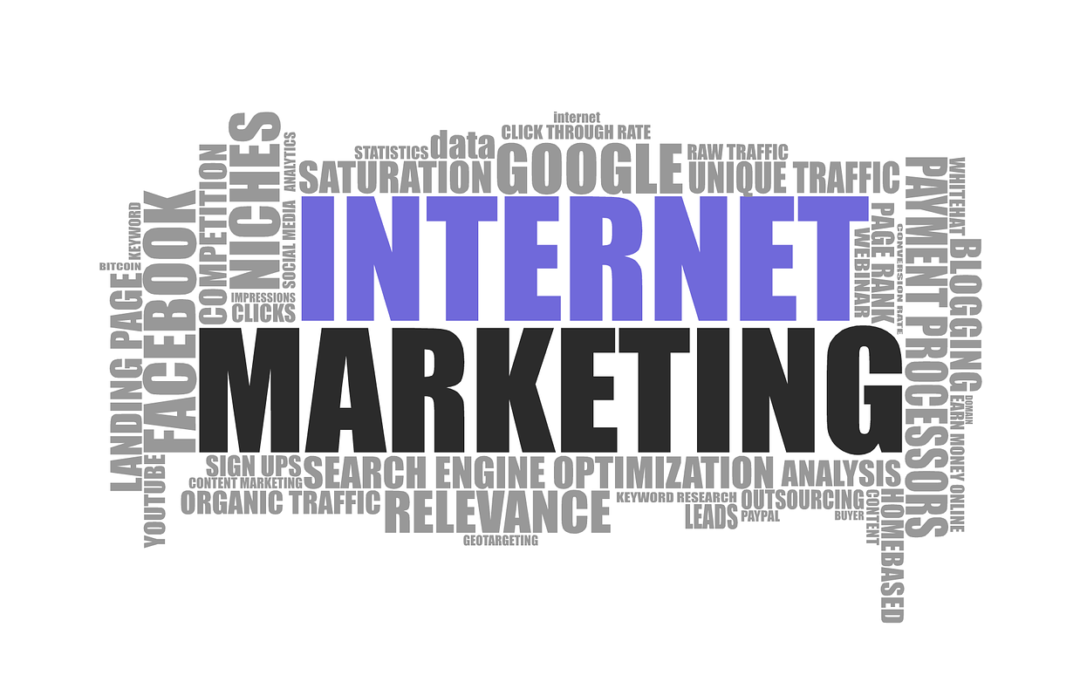Introduction
In the dynamic world of small service businesses, the right marketing strategy can be the cornerstone of growth and success. As a small business owner, you’re constantly balancing the need to attract new customers while keeping expenses in check. This is where understanding and effectively utilizing both paid and organic marketing strategies becomes crucial. This blog post is dedicated to demystifying these options, providing you with a clear roadmap to invest your time, money, and energy wisely in marketing efforts.
The landscape of marketing options is vast and varied, ranging from traditional paper-based methods like mailers and flyers to the digital realm of Google AdWords and social media advertising. With such an array of choices, it’s common to feel overwhelmed. However, the key is not to dive into all of them at once. Instead, we recommend focusing on a select few—maybe just 1-3 strategies to start with—that align best with your business goals and customer base. This approach allows you to manage your resources effectively and avoid spreading yourself too thin.
Budgeting, of course, plays a pivotal role in this process. It’s important to remember that there’s no one-size-fits-all answer to how much you should be spending on marketing. While a general guideline suggests allocating 5%-15% of your annual revenue to marketing efforts, the reality is that each business is unique. You can start small, even with as little as $100 per month, and scale up as you see the returns on your investment.
This post aims to guide you through the various marketing options at your disposal, helping you make informed decisions that best suit your business’s needs and budget constraints. Let’s embark on this journey to enhance your marketing strategy, step by step, in a way that’s both sustainable and effective.
Understanding Your Budget
When it comes to marketing for small service businesses, one of the first hurdles is understanding and setting a realistic budget. It’s essential to recognize that marketing is an investment, not just an expense. The right strategy can bring in new customers and grow your business, but it requires careful planning and budgeting.
Starting Small and Scaling Up
One of the most common misconceptions among small business owners is the belief that effective marketing requires a substantial financial outlay from the outset. In reality, the most successful marketing strategies often start small and scale up over time. Beginning with a modest budget allows you to test different marketing approaches, measure their effectiveness, and understand what works best for your specific business before committing more resources.
Determining Your Marketing Budget
Determining how much to spend on marketing can be challenging, especially for businesses just starting or with limited funds. A good rule of thumb is to allocate a percentage of your annual revenue to marketing. While the general guideline suggests 5%-15%, this is not a strict rule. Every business is unique, and factors like your industry, competition, target market, and stage of business growth play a crucial role in deciding the right amount.
For new businesses or those with tighter budgets, starting with as little as $100 per month can be a viable approach. This budget can be gradually increased as your business grows and you begin to see the returns on your initial investment.
Balancing Cost and Effectiveness
It’s important to balance cost with effectiveness. Not every marketing channel will offer the same return on investment (ROI), and some strategies might be more cost-effective for your business model than others. For instance, digital marketing methods like social media and email marketing can be less expensive and more measurable compared to traditional methods like print advertising.
Tracking and Adjusting Your Budget
Finally, tracking the performance of your marketing efforts is critical. Use tools and metrics relevant to each marketing channel to assess their effectiveness. This data will help you understand where your marketing dollars are making the most impact and allow you to adjust your budget accordingly. Remember, a successful marketing strategy is flexible and responsive to results, not just monetary investment.
In summary, understanding your budget in marketing involves starting with a manageable amount, using it wisely across carefully selected channels, and continually adjusting your strategy based on performance data. This approach ensures that your marketing efforts are both cost-effective and aligned with your business goals.

Paper Marketing Options
In a world leaning heavily towards digital, paper marketing retains a unique charm and effectiveness, especially for small service businesses seeking a personal connection with their local community. Let’s explore how traditional paper marketing methods can be creatively adapted to meet today’s business challenges.
Challenge: Broad Local Outreach
- Solution: Mailers and Flyers
- Why It Works: They offer wide reach at a low cost.
- Best Practices: Focus on eye-catching design and a clear, persuasive message. Target specific neighborhoods to maximize impact.
Challenge: Detailed Service Explanation
- Solution: Brochures
- Why It Works: They provide space for detailed information.
- Best Practices: Balance appealing visuals with informative content. Keep it concise and engaging.
Challenge: Personal Customer Engagement
- Solution: Post-Cards
- Why It Works: They add a personal touch, ideal for follow-ups or greetings.
- Best Practices: Use for special occasions, thank you notes, or reminders. Personalization can significantly enhance their impact.
Challenge: Maximizing Local Impact Without Addresses
- Solution: Every Door Direct Mail (EDDM) by USPS
- Why It Works: Allows targeting entire neighborhoods without specific addresses.
- Best Practices: Select areas strategically based on your typical customer demographics. Combine with compelling offers.
Challenge: Streamlining Direct Mail Campaigns
- Solution: Send Jim
- Why It Works: Automates and simplifies the direct mail process.
- Best Practices: Utilize for regular, scheduled mailings. Personalize messages to maintain a connection with your audience.
By addressing specific marketing challenges and presenting each paper marketing option as a tailored solution, this approach not only offers clear guidance but also illustrates the relevance and effectiveness of traditional marketing methods in the contemporary business landscape.
Organic Online Marketing Options
In today’s digitally-driven market, organic online marketing stands out as a cost-effective way for small service businesses to increase their visibility and engage with customers. This section will guide you through various organic digital marketing avenues, explaining how to leverage them effectively to foster business growth.
Storytelling Through Social Media
Social media platforms are more than just promotional tools; they are storytelling mediums. Share your business journey, customer success stories, and behind-the-scenes glimpses to build a community around your brand. Platforms like Facebook, Instagram, and Twitter are perfect for this, offering a space to connect with your audience on a more personal level.
Localized Engagement with Google My Business
Google My Business is a free tool that allows you to manage your online presence across Google, including search and maps. By keeping your business information up to date and encouraging customer reviews, you can improve your local search visibility, making it easier for potential customers in your area to find you.
Building Reputation on Review Sites
Yelp and Nextdoor are platforms where customers share their experiences and seek recommendations. Maintaining an active profile, responding to reviews, and engaging with the community can significantly boost your credibility and attract new customers.
SEO: The Backbone of Digital Visibility
Optimizing your website for search engines (SEO) ensures that your business appears in relevant search results. This involves using the right keywords, publishing quality content, and ensuring your website is user-friendly and mobile-responsive.
The Power of Email Marketing
Email marketing remains one of the most effective ways to reach and retain customers. Use it to share updates, promotions, and valuable content with your existing customer base. Personalization and segmentation of your email list can lead to better engagement and customer loyalty.
Each of these organic online marketing options offers unique advantages and can be highly effective when used thoughtfully. They require time and consistency but can yield significant long-term benefits in terms of customer engagement and brand loyalty. Remember, the key to successful organic online marketing is authenticity and value-driven content that resonates with your audience.
Maximizing Visibility: A Deep Dive into Paid Online Marketing Options
Expanding your business’s visibility and reach can be significantly accelerated through strategic investments in paid online marketing. Rather than listing options, let’s adopt a scenario-based approach, examining typical objectives of small service businesses and how different paid online marketing tools can meet these goals.
Scenario 1: Capturing Search-Intent Customers
- Objective: Attract customers who are actively searching for services you offer.
- Solution: Google AdWords.
- Strategy: Focus on keyword research to target terms your potential customers are using. Develop concise, clear ads that directly address the customer’s search intent. Track conversions to adjust bids and keywords for optimal ROI.
Scenario 2: Enhancing Local Service Visibility
- Objective: Target potential customers in specific local areas.
- Solution: Google Local Services Ads.
- Strategy: Use Google’s local services feature to appear in targeted local searches. Emphasize reviews and ratings to build trust. As this is a pay-per-lead platform, carefully monitor the quality of leads to ensure cost-effectiveness.
Scenario 3: Engaging Niche Audiences
- Objective: Reach a specific demographic or interest group.
- Solution: Paid Social Media Ads (Facebook, Instagram, LinkedIn).
- Strategy: Tailor your ads to appeal to the specific interests, demographics, and behaviors of your target audience. Experiment with different ad formats (e.g., video, carousel) to see which resonates best with your audience.
Scenario 4: Building Community Trust
- Objective: Establish a strong presence in your local community.
- Solution: Paid Yelp and Nextdoor Ads.
- Strategy: Leverage these platforms to target local audiences. Focus on crafting ads that highlight your involvement and reputation in the community. Encourage satisfied customers to leave reviews to bolster your credibility.
Scenario 5: Reaching a Broad Audience
- Objective: Create widespread awareness about your brand or a specific offering.
- Solution: Radio and TV Ads.
- Strategy: Develop engaging and memorable ads that convey your brand’s message. Consider the timing and location of your ads to maximize exposure to your target audience.
Starting Small: Picking Your Focus
Embarking on a marketing journey can be daunting, especially when faced with a myriad of options. For small service business owners, the key to effective marketing lies not in spreading efforts thinly across all available channels but in selecting a few areas to focus on and excel in.
Identify Your Strengths and Audience: Start by assessing your business’s strengths and understanding your target audience. What makes your service unique? Who are your most frequent customers, and where can you find them? The answers to these questions will guide you in choosing the most appropriate marketing strategies.
Choosing 1-3 Marketing Strategies: Rather than attempting to master all marketing forms at once, it’s more practical and efficient to select 1-3 strategies that align best with your business goals and audience. For instance, if your business thrives on local foot traffic, focusing on local SEO and Google My Business might yield better results than broad-scale social media marketing.
Gradual Expansion and Adaptation: Once you’ve chosen your primary marketing strategies, invest time in learning and refining them. Monitor their effectiveness and be prepared to adapt based on the results you see. As your business grows and you become more comfortable with these initial strategies, you can consider gradually expanding your marketing efforts to include additional channels.
Remember, successful marketing is a marathon, not a sprint. It’s about making consistent, focused efforts and learning from both successes and failures. By starting small and being strategic in your focus, you set the foundation for sustainable growth and a robust presence in your market.
Budgeting for Marketing: How Much Should You Spend?
Deciding how much to allocate to marketing is a pivotal decision for small service businesses. It’s a balance between investing enough to make a meaningful impact and not stretching your finances too thin. A common rule of thumb is to dedicate 5%-15% of your annual revenue to marketing. However, this is a flexible guideline rather than a one-size-fits-all solution. The amount can vary widely depending on factors like your industry, market competition, business stage, and overall growth objectives.
For newly established businesses or those with tighter budgets, it’s feasible to start with a more modest sum, even as low as $100 per month. This approach allows you to test the waters and understand what works best for your business without significant financial risk. As you begin to see returns on your initial marketing investments, you can gradually increase your budget, aligning it with your growing business needs.
It’s also crucial to remember that not all marketing strategies require a hefty budget. Many effective organic marketing methods, like optimizing your Google My Business profile or engaging with customers on social media, can be implemented with minimal financial outlay, relying more on time and creativity.
Ultimately, the key to successful marketing budgeting lies in tracking and analysis. Regularly monitor the performance of your marketing efforts to understand their return on investment (ROI). This data will help you make informed decisions about where to allocate or adjust your spending, ensuring that each dollar you invest in marketing contributes to the growth and success of your business.

Conclusion
Navigating the diverse landscape of marketing options for small service businesses can initially seem overwhelming. However, by breaking down the process into manageable steps and understanding the unique needs of your business, you can create a powerful marketing strategy that is both effective and sustainable.
Remember, the essence of successful marketing lies in knowing your audience and tailoring your approach to connect with them meaningfully. Whether through the tactile appeal of paper marketing, the tailored precision of paid online methods, or the community-building power of organic digital strategies, each avenue offers unique benefits. Your task is to find the right mix that resonates with your business and your customers.
Starting small with a focused approach, whether in budgeting or strategy selection, is not a limitation but a smart business move. It allows for flexibility, learning, and growth without overextending your resources. As your business evolves, so too can your marketing strategy, adapting to new challenges and opportunities.
Above all, remember that marketing is an ongoing journey, not a one-time effort. It requires patience, persistence, and a willingness to adapt. Keep an eye on the effectiveness of your strategies, stay open to new ideas, and don’t be afraid to try different approaches. With the right mindset and a well-planned strategy, your marketing efforts can lead to sustained growth and success for your small service business.
We hope this guide has provided you with valuable insights and a clear path forward in your marketing endeavors. May your efforts bring you closer to your business goals and open up new avenues for success and growth.
Elevate Your Business with Smart Pricing Solutions!
Dive into a new era of business efficiency with our A Cut Above Software Applications. If you’re eager to systematize your operations, our Gross Margin Pricing Calculator Application is the perfect starting point. Tailor-made for the savvy small business owner, this application is your key to swift, precise job cost calculations. Enhance your pricing strategies effortlessly and boost your profitability. Don’t let this chance slip away! Click the button, download our application, and begin your journey to smarter, more efficient business management today.

